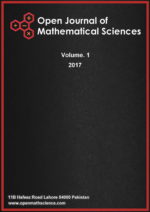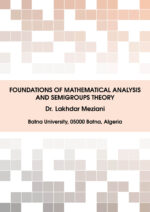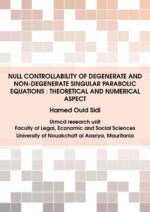Ptolemy Scientific Research Press (PSR Press)is a highly regarded publisher of scientific literature dedicated to bringing the latest research and findings to a broader audience. With a focus on cutting-edge research and technology, Ptolemy Scientific Research Press offers a range of publications catering to professionals, researchers, and student’s needs. Whether looking for information on the latest breakthroughs in physics, biology, engineering, or computer science, you can trust Ptolemy Scientific Research Press to deliver insightful, accurate, and engaging content. With its commitment to quality, accessibility, and innovation, Ptolemy Scientific Research Press is an essential resource for anyone interested in science and technology.

Latest Published Articles
OMS-Vol. 2 (2018), Issue 1, pp. 221–227 Open Access Full-Text PDF
Guoshun Liu, Zhiyang Jia, Wei Gao
Abstract:With the extensive application of ontology in the fields of information retrieval and artificial intelligence, the ontology-based conceptual similarity calculation becomes a hot topic in ontology research. The essence of ontology learning is to obtain the ontology function through the learning of ontology samples, so as to map the vertices in each ontology graph into real numbers, and finally determine the similarity between corresponding concepts by the difference between real numbers. The essence of ontology mapping is to calculate concepts from different ontologies. In this paper, we introduce new ontology similarity computing in view of stochastic primal dual coordinate method, and two experiments show the effectiveness of our proposed ontology algorithm.
New iterative methods using variational iteration technique and their dynamical behavior
OMA-Vol. 2 (2018), Issue 2, pp. 01–09 | Open Access Full-Text PDF
Muhammad Nawaz, Amir Naseem, Waqas Nazeer
Abstract:The aim of this paper is to present new sixth order iterative methods for solving non-linear equations. The derivation of these methods is purely based on variational iteration technique. Our methods are verified by means of various test examples and numerical results show that our developed methods are more effective with respect to the previously well known methods.
Flip and Hopf Bifurcations of Discrete-Time Fitzhugh-Nagumo Model
OMS-Vol. 2 (2018), Issue 1, pp. 209–220 Open Access Full-Text PDF
Qamar Din, Sadaf Khaliq
Abstract:In this paper, dynamics of a two-dimensional Fitzhugh-Nagumo model is discussed. The discrete-time model is obtained with the implementation of forward Euler’s scheme. We present the parametric conditions for local asymptotic stability of steady-states. It is shown that the two-dimensional discrete-time model undergoes period-doubling bifurcation and Neimark-Sacker bifurcation at its positive steady-state. Furthermore, in order to illustrate theoretical discussion some interesting numerical examples are presented.
Block Digraph of a Directed Graph
OMS-Vol. 2 (2018), Issue 1, pp. 202–208 Open Access Full-Text PDF
H. M. Nagesh, M. C. Mahesh Kumar
Abstract:Let \(D\) be a connected digraph of order \(n\); \((n \geq 3)\) and let \(B(D)=\{B_1,B_2,\ldots,B_N\}\) be a set of blocks of \(D\). The block digraph \(Q=\mathbb{B}(D)\) has vertex set \(V(Q)=B(D)\) and arc set \(A(Q)=B_iB_j\) and \(B_i,B_j \in V(Q),\) \(B_i,B_j\) have a cut-vertex of \(D\) in common and every vertex of \(B_j\) is reachable from every other vertex of \(B_i\) We study the properties of \(\mathbb{B}(D)\) and present the characterization of digraphs whose \(\mathbb{B}(D)\) are planar; outerplanar; maximal outerplanar; minimally nonouterplanar; Eulerian; and Hamiltonian.
Fuzzy Integral Domains and Fuzzy Regular Sequences
OMS-Vol. 2 (2018), Issue 1, pp. 179–201 Open Access Full-Text PDF
Saba Ayub, Waqas Mahmood
Abstract:In this paper, the notions of fuzzy zero-divisors and fuzzy integral domains are illustrated. Some fundamental properties of fuzzy integral domains are proved. Moreover, the notions of fuzzy regular element and fuzzy regular sequences are defined. It is shown that any permutation (resp. any positive integral power) of a fuzzy regular sequence is again a fuzzy regular sequence. At the end, fuzzy regular sequences of two fuzzy submodules are related with the help of fuzzy short exact sequences.
An Intuitionistic Approach for One-shot Decision Making
OMS-Vol. 2 (2018), Issue 1, pp. 164–178 Open Access Full-Text PDF
Aamir Mahboob, Tabasam Rashid, Wojciech Salabun
Abstract:In 1965, L.A Zadeh inaugurated the idea of fuzzy set theory by extrapolating classical set theory. Later, Atanassov popularized it as an intuitionistic fuzzy set (IFS) more precisely than the fuzzy logic theory in 1983. IFS is highly fruitful in expounding uncertain situations which we face in decision making. In this paper, we have reexamined the idea of IFS and suggested the applications in decision making methods. Moreover, this theory helps us find the solution of one-shot decision (OSD) problems we mostly face in trade and economics, and the behavior of the decision person and assists them to get the best answer.








